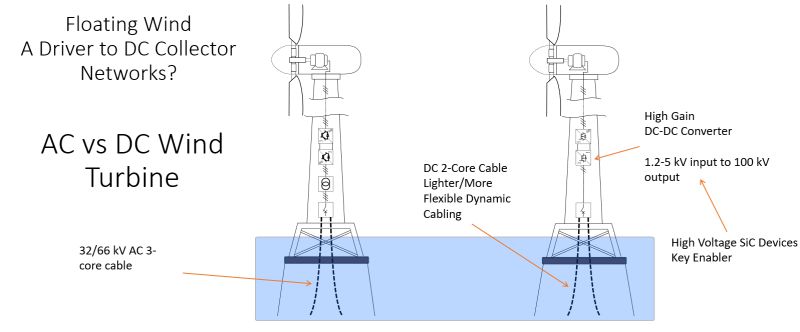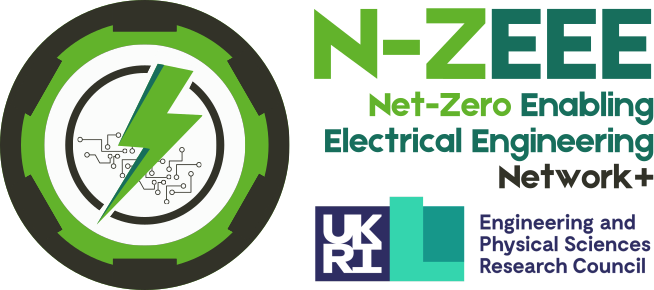Current Research Projects
Please see a selection of current projects from the Electrical Power node below.
Virtual Power Plant with Artificial intelligence (VPP-WARD)
Data mining for turbine health monitoring and predicting future trends
Wind2DC
Net-Zero Enabling Electrical Engineering (N-ZEEE)
TESTBED2
Virtual Power Plant with Artificial intelligence for Resilience and Decarbonisation (VPP-WARD)
Contact: Professor Hongjian Sun
Project Overview
Distributed Energy Resources (DERs) play a critical role in achieving Net Zero. Presently there are over 1 million homes having solar panels in the UK. With the green energy transition well under way in the UK, by 2050 there could be tens of millions of DERs connected with the UK power grid. This VPP-WARD project aims to develop innovative physics-informed Artificial Intelligence (AI) solutions for enabling Virtual Power Plants (VPP), capable of aggregating and managing many diverse DERs to improve the decision-makings of network operators and enhance the grid resilience when facing the threat of natural hazards and extreme events. These could also lead to reduced energy bills for millions of energy consumers, less power cuts during extreme events, to greater adoption and more efficient management of DERs, and ultimately to enable rapid progress towards Net Zero.
Data mining for turbine health monitoring and predicting future trends
Contact: Dr Peter Matthews
Funders/Collaborators: Ørsted
Project Overview
The goal is to develop and evaluate robust data centric engineering methods for extracting the root causes of the key failure and maintenance events on wind turbines, with a view to automatically obtaining a deeper understanding of the development of wind turbine faults. This will be achieved through developing new data mining algorithms which use input data in the from of maintenance logs, parts consumed logs, and SCADA (operational log) data sets associated of individual wind turbines. This approach has the potential to scale-up to multiple wind turbines within large farms, as well as the ability to abstract the knowledge to apply it to future turbine technology.
Wind2DC
Contact: Professor Alton Horsfall
Co-Investigators: Professor Christopher Crabtree, Dr. Nur Sarma
Academic Collaborators: University of Edinburgh
Industrial Collaborators: JDR Cable Systems, Clas-SiC Wafer Fab Ltd, SSE Renewables, Driving the Electric Revolution -IC, Siemens Energy Ltd
Project Overview

The Wind2DC project will develop co-designed mechanical and electrical novel power take off systems for offshore wind-turbines that will these wind-turbines to be directly connected to a medium voltage dc (MVDC) collector system, as opposed to the ac collector systems that are current used. This will help exploit the full potential of offshore floating wind by: (1) reducing system costs, (2) Increasing the feasible size of offshore wind-farms, and (3) alleviate expected issues with dynamic cabling that will arise in floating wind-turbines.
This supports the UK commitment to Net Zero by 2050 by enabling access to a large fraction of the estimated 4 TW of energy that is accessible from offshore wind. The project is strongly supported by industry, including Siemens Energy, Clas-SiC, JDR Cables, SSE Renewables. Floating Offshore Wind Turbine technology has the potential to unlock wind resources in offshore areas in which it is unfeasible to use conventional fixed-bottom turbine structures. This would provide a significant increase in exploitable offshore wind resources, with higher capacity factors than onshore or fixed-bottom offshore wind resources. The European floating wind resource has been estimated at 4 TW, a large share of which is located off Scotland and the south-west of England.
To date, all offshore wind-farms have utilised ac electrical collection systems (in which the voltages and currents oscillate) to gather the power from each wind-turbine in the farm together before it is transmitted back onshore. In wind-farms close to shore, this transmission is also done using an ac system. in wind-farms that are far offshore the power is usually converted to dc (in which the voltages and currents are steady values) and transmitted back onshore through a High Voltage dc (HVDC) transmission line. Such systems require power-electronic converters to change the power from the wind-farm between ac and dc on both ends of the HVDC line. The advantage of dc systems is that the amount of conductors within the transmission cables is substantially reduced and, unlike ac transmission systems, there is no feasible limit on the length of the transmission system.
Floating offshore wind-turbines devices require dynamic collection network cabling that can withstand the movement of the floating offshore wind-turbine platforms. In waters deeper than 100m it is difficult to fix the array cables to the seabed, leading to proposals in which the entire cable collection network is also floated. For such propositions a move to a Medium Voltage DC collection (MVDC) network, rather than a conventional ac collection network, would bring substantial benefits in reducing the weight of the cables themselves, as well as increasing their flexibility due to the reduction in conductor sizes need for a given power rating when moving from ac to dc. One of the main barriers to realising these MVDC collection networks is the unavailability of wind-turbine power-take off systems that are compatible with a high-power MVDC network voltages (expected to be in the region of 100 kilovolts plus).
The Wind2DC project will focus on developing light-weight efficient power take off systems for Offshore Wind Turbines, providing a direct MVDC transmission compatible voltage output from each offshore wind-turbine, addressing the issue of cost-effective collection architectures, and enabling large scale offshore wind-turbines arrays with floating dynamic cabling. To do this the project will exploit novel generator, generator interface converter and dc-dc converter designs, with a focus on collaborative co-design of each of these aspects between the university teams that make up the project. To achieve this the researchers will exploit the potential next-generation wide bandgap semiconductors, which offer substantially increased voltage ratings as well as reduced switching losses, and novel modular electrical generator designs
Net-Zero Enabling Electrical Engineering (N-ZEEE)
Contact: Professor Christopher Crabtree, Professor Alton Horsfall
Collaborators: Newcastle University, Edinburgh University
Project Overview

Electrical engineering, through power electronics, machines and drives, underpins all renewable electricity generation, conversion and integration. N-ZEEE is bringing together diverse and disparate research activity in emerging electrical engineering for next-generation renewables to form a coherent community of engineers that can empower significant change in the approach to this critical and enabling field.
We are working with academia, industry, policy makers and wider stakeholders to enable next generation wind, marine, photovoltaic and novel future energy generation and allow the UK to deliver its energy and climate priorities and pioneer underpinning PEMD research.
- Building a strong academic and industrial research community and a coherent network of knowledge, research and practice.
- Creating a network within which cross-cutting themes will strengthen the UK’s ability to develop next-generation-enabling PEMD technology for renewable generation, conversion and integration.
- Providing support for early career researchers to build solid relationships and develop their networking expertise so that they can drive forward future research in enabling electrical engineering and become the research leaders of tomorrow.
- Providing a forum for doctoral students researching PEMD within existing application-focused Centres for Doctoral Training (CDTs) to come together to share ideas and develop their networks in an open and constructive environment.
Our partners include Supergen ORE Hub, Siemens, Aura CDT, Driving the Electric Revolution Industrialisation Centres (DER-IC), the University of Manchester, Lunar Energy, SuperNode (Republic of Ireland), and the UK Centre for Power Electronics. We always welcome expressions of interest from potential academic, industry and policy partners.
TESTBED2: "Testing and Evaluating Sophisticated information and communication Technologies for enaBling scalablE smart griD Deployment", is a Research and Innovation Staff Exchange (RISE) project under Horizon2020 Marie Skłodowska-Curie Actions (MSCA)
Contact: Professor Hongjian Sun
Project Overview
Smart grids represent an electricity network that can intelligently integrate generators, consumers and energy storage in order to efficiently deliver electricity. There is a clear consensus that smart grids can provide many innovative services. Decision-making plays a vital role in these services. But the computational complexity of decision-makings could grow explosively with the size of smart grid infrastructure, the number of devices/users, or the amount of data; If this scalability issue was underestimated, smart grid services can end up with poor performance or limited function, making these services impractical to meet the needs of real-life or industrial-scale deployment. Hence, there is an urgent need to solve the research problem: to what extent the performance and function of smart grids can be maintained without having significant increase of the computational complexity when its scale is changed in terms of smart grid infrastructure size or the number of devices/users?
TESTBED2 is a major interdisciplinary project led by Durham University that combines expertise in three academic disciplines - Electronic & Electrical Engineering, Computing Sciences and Macroeconomics, to address the aforesaid problem. The main focus is on developing new techniques to improve the scalability of smart grid services, particularly considering the joint evolution of decarbonised power, heat and transport systems. Moreover, new experimental testbeds will be created to evaluate scalable smart grid solutions. Overall, the main objective of this project is to coordinate the action of 12 Universities and 5 enterprises (3 SMEs and 2 large enterprises) with complementary expertise to develop and test various promising strategies for ensuring the scalability of smart grid services, thereby facilitating successful deployment and full roll-out of smart grid technologies.
For more information visit the project webpage


/prod01/prodbucket01/media/durham-university/departments-/engineering/74202-5112X1676.jpg)
/prod01/prodbucket01/media/durham-university/departments-/engineering/node-webpages/ep/wind-turbine.jpg)
/prod01/prodbucket01/media/durham-university/research-/research-institutes/durham-energy-institute/technologies/wind/wind-turbine.jpg)
/prod01/prodbucket01/media/durham-university/departments-/engineering/node-webpages/ep/wind2dc---AH.jpeg)
/prod01/prodbucket01/media/durham-university/departments-/engineering/node-webpages/ep/NZEEE-logo.png)
/prod01/prodbucket01/media/durham-university/departments-/engineering/node-webpages/ep/smart-grid1.jpg)